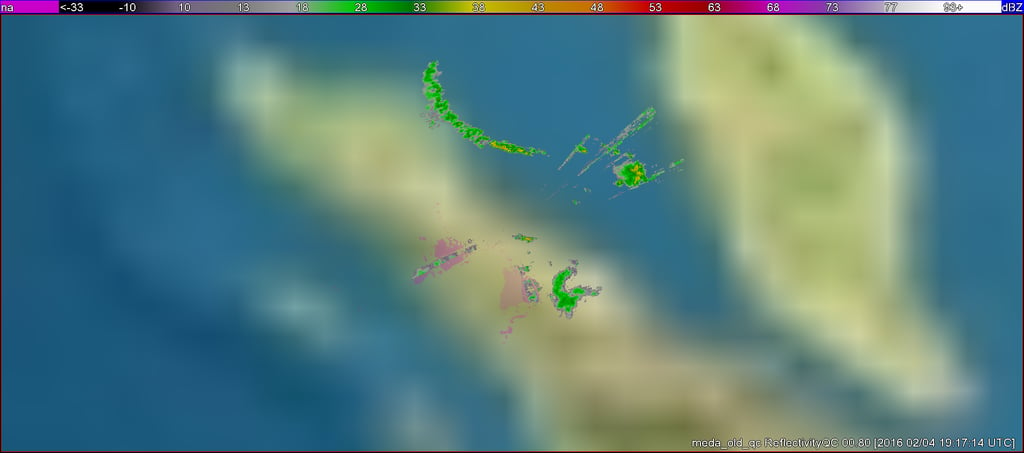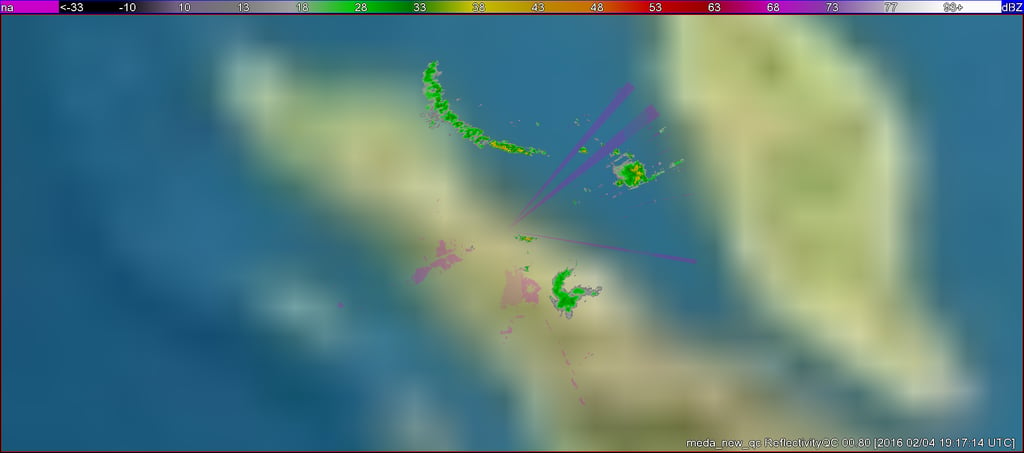International Radar Quality Control: “Old” vs “New”
by Noah Lock, on Feb 18, 2016 2:28:20 PM
Proper quality control (QC) remains a constant struggle with International radar systems due to inconsistent scanning strategies, inconsistent spatial and temporal resolution, and the lack of available radar products. The addition of dual-polarization technology in the United States has expanded the capabilities for the removal of non-meteorological echoes (e.g., birds, ground clutter, etc.). However, one is not always afforded the luxury of dual-polarization technology overseas (or even radial velocity data), and most often must rely solely on radar reflectivity factor.
WDT has previously relied on the use of the Warning Decision Support System – Integrated Information (WDSS-II) system’s internal QC for its International systems. That system was originally designed around the WSR-88D (Weather Surveillance Radar 88 Doppler) in the United States, which is set to operate within a range of specified scanning strategies. This often leads to issues for the WDSS-II QC algorithm when used with systems that implement “erratic” volume coverage patterns (VCPs). These factors led to the need to replace the algorithm with an “in-house” algorithm that is more refined and tunable to these International radar systems.

Figure 1 - Raw reflectivity from the Medan radar’s 0.8 degree elevation angle in Indonesia. The image shows the presence of multiple non-meteorological echoes coincident with real precipitation. Some of these non-meteorological “targets” include interference spikes and topography.
In Figure 1 above, the Medan, Indonesia radar’s 0.8° elevation angle shows multiple non-meteorological echoes in and around the city. Interference spikes from other electronic sources (e.g., Wi-Fi, cell towers, etc.) are some of the more common types of issues to deal with overseas. Figure 2 below shows residual interference spikes and ground clutter targets after the WDSS-II QC. However, as you can see in Figure 3, there is considerable improvement from the WDT QC, which has been coined “IntQC”.

Figure 2- Remaining reflectivity for the Medan radar’s 0.8 degree elevation angle after WDSS-II QC. Note the residual ground clutter and interference spikes.

Figure 3- Remaining reflectivity in the Medan radar’s 0.8 degree elevation angle after the new "IntQC" algorithm. The "IntQC" algorithm shows considerable improvement in the removal of the clutter targets and the interference spikes while still retaining the actual meteorological echo.
While Figure 3 shows the improvement the “IntQC” has over the WDSS-II QC, there are still certain situations where it isn’t 100% effective. Figure 4 below shows the Palembang, Indonesia radar at the 0.2° elevation angle after WDSS-II QC, which doesn’t appear to have removed much of anything if at all. However, Figure 5 illustrates that relying solely on reflectivity factor is not always effective. The “IntQC” has an option to utilize radial velocity data where it is available and useful. Unfortunately, in this situation velocity data were not helpful to the cause, and a reflectivity only approach was used for this round of QC. With such limited information, there remains only so many ways to improve QC for these International radar systems. However, despite some of the shortcomings in certain situations, the new algorithm has shown improvement.

Figure 4- Reflectivity factor for the Palembang radar’s 0.2 degree elevation angle after WDSS-II QC. Note the lack of effective QC on these data from the residual ground clutter targets.
 Figure 5- QC'd reflectivity factor in the Palembang radar's 0.2 degree elevation angle. The "IntQC" method was able to remove more of the topography induced clutter near the radar's location. However, the residual clutter indicates that further work/tuning is required.
Figure 5- QC'd reflectivity factor in the Palembang radar's 0.2 degree elevation angle. The "IntQC" method was able to remove more of the topography induced clutter near the radar's location. However, the residual clutter indicates that further work/tuning is required.








